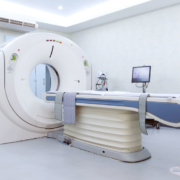18 September 2017
Breast MRIs are used in some newly diagnosed breast cancer patients, especially those with dense breast tissue. In addition, they are used as a supplement to mammography in women who are found to be at high risk. In order to distinguish between normal and cancerous tissue, an intravenous contrast dye is used. For MRI studies, the contrast material that is used is gadolinium-based.
Gadolinium is a heavy metal, and it has the potential to be retained in the brain and kidneys. Some recent studies in both the scientific and lay press have focused on the safety of gadolinium. While there have only been scattered reports of adverse events, an FDA advisory panel voted for warning labels and for more study.
The FDA advisory focuses primarily on a class of agents known as “linear”. The “macrocyclic” gadolinium contrast agents do not appear to have the same risk of depositing in the brain or kidneys. Both types of gadolinium contrast can be used for breast MRI studies. If you have concerns, ask the facility which form of gadolinium they use.
*Note – UCLA facilities (Westwood, Santa Monica and Santa Clarita), San Fernando Interventional Radiology (a RadNet facility) and Providence St. Joseph Hospital all use gadavist, a “macrocyclic” form of gadolinium contrast, for their breast MRI studies. Because facility practice patterns may change over time, ask at the time of your exam if you have concerns.





